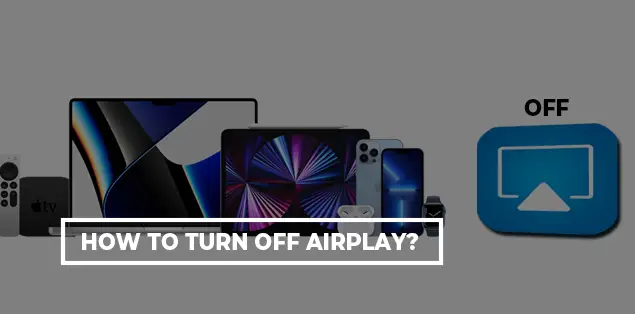Without a doubt, AirPlay is one of the most useful features of iOS. It allows you to stream media from your iPhone, iPad, or Mac to speakers, TVs, or other devices connected to your Wi-Fi network. Turning off AirPlay can save some battery life and bandwidth on your home network if you don’t need it now.
In this article, we’ll explain how to turn off AirPlay in different versions of iOS and macOS, as well as reveal some tips that will help you make this feature more useful.
So, let’s jump right into it!
Why Does My Airplay Keep Popping Up?
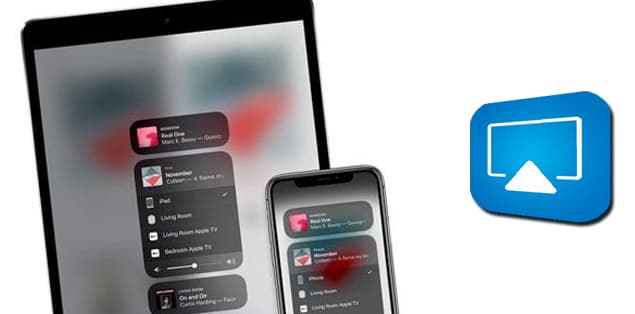
AirPlay is a technology that enables you to wirelessly broadcast music and video from your iOS smartphone to other devices, such as your TV. You can do this via AirPlay. If AirPlay continues flashing on your TV, it may be because you have not set up your TV to identify AirPlay devices. You may remedy this by adjusting the settings on your TV.
You can address this problem by either setting up your TV to detect AirPlay devices or turning off AirPlay on the iOS device.
How to Turn Off Airplay on iPhone?
By moving the playback back to your iPhone rather than the device you are casting to, you may disable AirPlay on your iPhone in several different ways.
Using the Screen Mirroring feature in Control Center
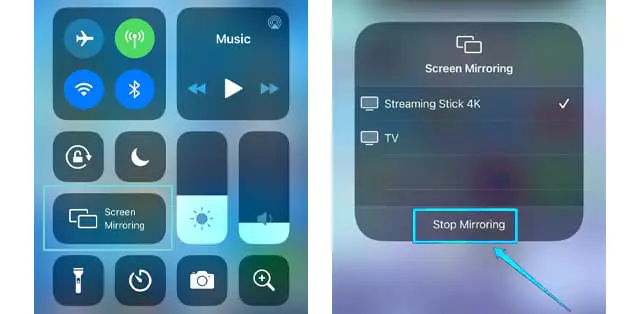
You may disable AirPlay on the iPhone via the Control Center. For example, suppose a video is playing on an AirPlay-compatible device through your iPhone or if you are mirroring your iPhone’s screen onto another display. In that case, using the Control Center, you can disable AirPlay to accomplish any of these things on your iPhone.
On an iPhone 11, 12, or 13, drag your finger down the screen in the top right corner of the display.
Swipe up from the bottom edge of the display on the iPhone SE, iPhone 8, iPhone 7, iPhone 6, and older generations.
When the Control Center appears, choose it and look for the Screen Mirroring option. If you’re using AirPlay, a notification about screen Mirroring will appear. To pause or terminate AirPlay, tap screen Mirroring in the Control Center.
The device where the material is streaming should show in the overflow menu. Tap Stop Mirroring to disable AirPlay.
Immediately the media should cease playing on the AirPlay-enabled device.
Using the Media Player in the Control Center
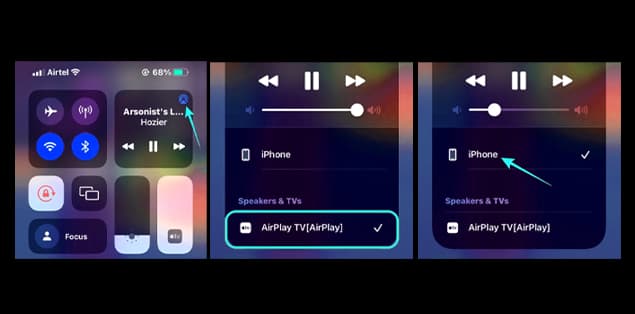
Casting audio from your iPhone to a device that supports AirPlay enables you to deactivate AirPlay on your iPhone. You may do this by utilizing the media player in the Control Center. To accomplish any of these things on your iPhone, use the Control Center.
On an iPhone 11, 12, or 13, drag your finger down the screen in the top right corner of the display.
Swipe up from the bottom edge of the display on the iPhone SE, iPhone 8, iPhone 7, iPhone 6, and older generations.
The Control Center will include a media player in the screen’s top right-hand corner when you open it. This player displays both the title of the song or media file playing as well as the name of the artist. The AirPlay symbol in the upper right corner should be light blue if the player broadcasts this material over AirPlay. Tap on the AirPlay symbol in the media player to end AirPlay.
An overflow menu with the AirPlay device you are broadcasting to highlighted under “Speakers & TVs” should appear.
Using the Apple TV App
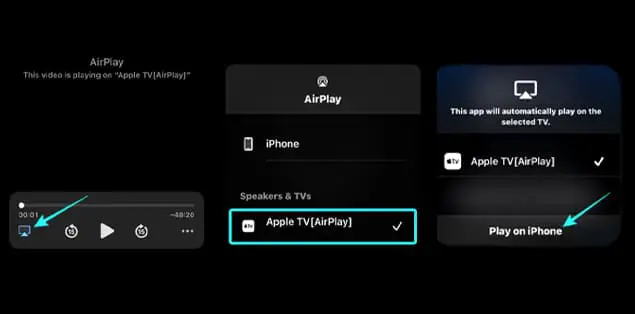
You may disable AirPlay from within the Apple TV app if you use it to stream movies and TV programs. In the playback controls, you will see a blue AirPlay indicator if you are streaming content from your iPhone to an AirPlay device using the Apple TV app. To turn off AirPlay, tap the Airplay icon that looks like a speaker in the lower-left corner of the screen.
Now, under “Speakers & TVs,” you should see an overflow menu displaying the AirPlay device that is presently playing the media.
By pressing on iPhone on this overflow menu, you may disable AirPlay.
The AirPlay-capable TV will now cease playing the content.
You may disable AirPlay playback if you’ve already configured the Apple TV app by first pressing the blue AirPlay symbol in the upper left corner.
You should be able to see that the chosen AirPlay device has been set up to play anything that you play on the Apple TV automatically. It will also show on your phone in the overflow menu after you pick up the AirPlay device. You should be able to see this after connecting your phone to the Apple TV. To disable this feature, choose Play on iPhone from the overflow menu.
Instead of automatically streaming content through AirPlay, the Apple TV app installed on your iPhone will now play any content that you play in the future.
Using the Apple Music App
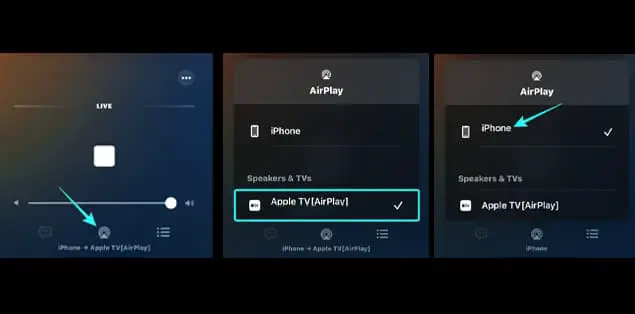
You may disable AirPlay from inside the Apple Music app if you are already listening to anything on it. When you open the Apple Music app, navigate to the playback screen. If AirPlay is on, a notation will read “iPhone AirPlay device” below the AirPlay sign at the bottom of the screen.
Tap the AirPlay symbol at the bottom to disable AirPlay within Apple Music. This will highlight your AirPlay device in the overflow menu’s “Speakers & TVs” section. In this menu, tap iPhone to disable AirPlay. This should stop your iPhone’s content from being played on other devices using AirPlay.
iOS Lock Screen
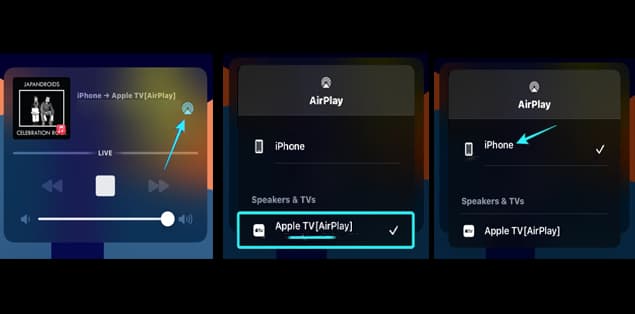
You may pause or terminate any material being streamed from your iPhone using AirPlay in a manner analogous to how you would do so using the Control Center. For example, to deactivate AirPlay, swipe up from the bottom of the media player box in the top right corner of the Lock Screen and tap the blue AirPlay sign.
How to Turn Off Airplay on Mac?
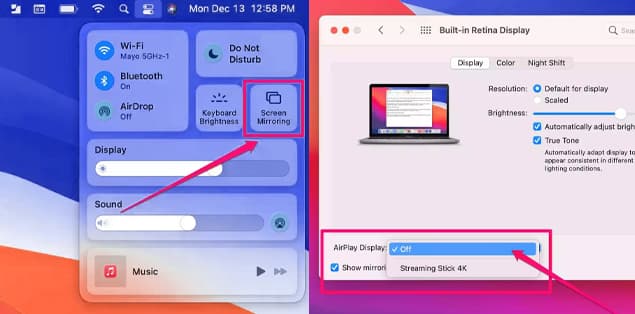
Follow these steps to turn off Airplay on Mac:
- On a Mac, you may access the Control Center by clicking the icon in the display’s top right-hand corner.
- From the drop-down menu, choose the symbol that looks like a mirror for the screen.
- Select Display Preferences from the drop-down menu of available choices when the new menu pops up.
- Navigate to the bottom of the window showing the Built-In Retina Display, and then choose Off from the AirPlay Display option that you see there.
How to Turn Off Airplay on iPad?
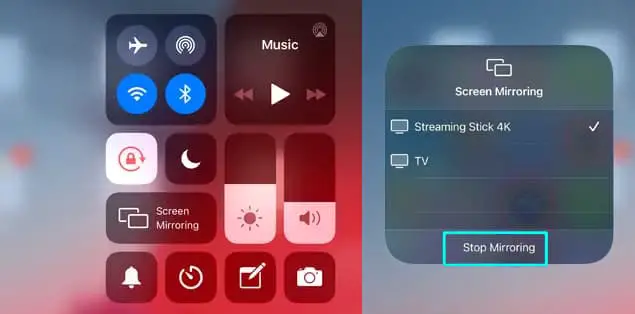
Follow these steps:
- Open Control Center.
- iPad users may access the Control Center in iOS 12 by swiping down from the screen’s upper-right corner.
- iPads running iOS 11 and previous versions: To access the top of the screen, swipe your finger up from the bottom.
- Choose either the Music or Screen Mirroring widgets to display on your screen.
- Choose the option to pause mirroring or pause airplay from the menu.
How Does AirPlay Function?
The two ways that AirPlay recognizes devices are either by name or by model number. You may connect all of your Apple devices with Apple AirPort Express as your remote switch without needing extra hardware or settings.
However, compatible devices can speak with one another when linked to the same Wi-Fi network. For example, your devices can speak with one another through the Turn off feature as long as they are on the same Wi-Fi network. That implies that your iPhone, iPad, Apple TV, AirPlay-capable speakers, and any other Apple products you may have will all be recognized.
Final Words
Airplay is an Apple device feature that lets you use your iPhone, iPad, Apple TV, and other Apple devices as speakers. You can wirelessly stream audio and video content through your device to any AirPlay-enabled device in your house via Wi-Fi. You can even beam your iTunes library to your home theater through Apple TV. AirPlay mirroring is a really handy feature.
Or, you can use your mobile device as a remote control to change the volume and play or pause Apple Music while using other AirPlay-compatible devices as a speaker. That is awesome!
AirPlay has been a useful feature of iOS since its inception. Using it, you can access content from your Apple devices and stream it to compatible devices like Apple TV, iMacs, and other devices that support AirPlay.
However, there are a few things that you may want to know about AirPlay on your iPhone or iPad. These can help you take advantage of this feature to its fullest potential.
